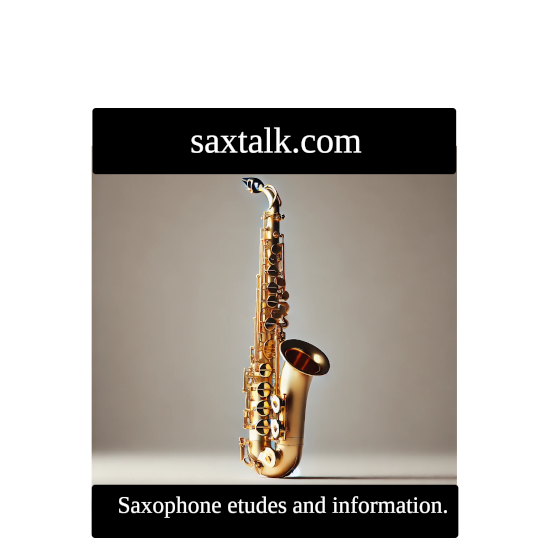Harry Carney's Love Affair with the Clarinet and Baritone Saxophone
Executive Summary
Harry Howell Carney was a pioneering American jazz saxophonist and clarinetist best known for his nearly five-decade tenure with the Duke Ellington Orchestra. Born in Boston, Massachusetts, Carney became one of the first major soloists on the baritone saxophone, helping to elevate the instrument’s role in jazz. His warm, expressive tone and mastery of circular breathing allowed him to shape Ellington’s sound from within and beyond the rhythm section. Carney also recorded with major jazz artists, including Ella Fitzgerald, Benny Goodman, Johnny Hodges, and Billy Taylor. His innovative use of harmony and his expressive power left a lasting legacy that still influences saxophonists today.
Credits
I used the following research assistants to help me to compile information for this article: the Mistral local large languange model, ChatGPT, and Wikipedia.
Introduction to Harry Carney
Harry Carney was born on April 1, 1910, in Boston, Massachusetts. Raised in a musical environment, Carney began playing piano at age seven, then moved on to clarinet and alto saxophone in his early teens. He grew up close to future Ellington bandmate Johnny Hodges and was inspired by early jazz greats such as Sidney Bechet, Buster Bailey, and Don Murray. By age 17, Carney was already performing professionally and would soon become one of the most distinctive voices in jazz history.
Musical Journey
Carney's life changed in 1927 when he was invited to join the Duke Ellington Orchestra for its Boston performances. Shortly after, he made his first recording with the band and became a core member of Ellington’s musical vision. In 1928, after the band expanded, Carney made the baritone saxophone his primary instrument. He remained a vital force in Ellington’s ensemble until the composer’s death in 1974. During that time, he also played clarinet, bass clarinet, and occasionally served as the band’s conductor when Ellington made theatrical entrances. Carney’s dedication was so deep that he often drove Ellington himself between gigs.
Innovations and Contributions
Harry Carney redefined what the baritone saxophone could be. He used its upper register to add color and harmony in unexpected ways and employed circular breathing to create sustained, uninterrupted tones that stunned audiences. Ellington wrote many features for Carney, including passages in pieces like Rockin’ in Rhythm, where Carney delivered the bubbling clarinet solo. In 1973, Ellington even centered his Third Sacred Concert around Carney’s sound. His influence stretched well into the bebop and post-bop eras, even as jazz evolved rapidly.
Collaborations and Influence
Beyond Ellington’s band, Carney collaborated with jazz luminaries such as Benny Goodman (notably at the 1938 Carnegie Hall concert), Ella Fitzgerald (Ella Fitzgerald Sings the Duke Ellington Song Book), and Billy Taylor (Taylor Made Jazz). He was also a frequent collaborator with Johnny Hodges. Younger musicians such as Hamiet Bluiett viewed Carney as the definitive baritone saxophonist of the 20th century. Charles Mingus honored Carney with the track “For Harry Carney,” released shortly after his death. Carney’s ability to support and lead simultaneously gave him a unique position in jazz history.
Personal Life
Carney was known as a calm, disciplined, and loyal individual. He was especially close to Ellington, not just musically, but personally, often chauffeuring the bandleader between venues and cities. Publicly, he maintained a low profile, and little is known about his family life. However, he was deeply respected by fellow musicians for his professionalism and dedication. After Ellington’s death in 1974, Carney famously said, “Without Duke, I have nothing to live for,” and passed away four months later.
Legacy and Future Impact
Harry Carney’s work continues to shape the way musicians approach the baritone saxophone. His expressive tone, precise control, and harmonic awareness transformed the instrument from a supporting role into a melodic powerhouse. He was one of the earliest practitioners of circular breathing in jazz, which has since become an admired technique. Recordings featuring Carney remain essential listening for saxophonists and jazz scholars alike. His sound is still studied, and his legacy is honored in tributes and jazz curricula across the globe.
Conclusions
Harry Carney’s contributions to jazz were foundational. His decades of innovation with the Duke Ellington Orchestra brought a unique voice to the baritone saxophone that had not existed before him. His mastery of both clarinet and saxophone, combined with a deep sense of musicality, helped elevate the role of woodwinds in big band jazz. As one of the first great baritone saxophonists, Carney’s work continues to inspire new generations of jazz musicians, reminding us that even the deepest voices can lead the way.
